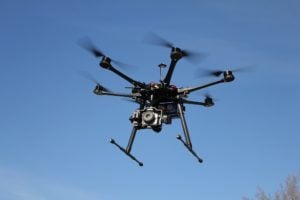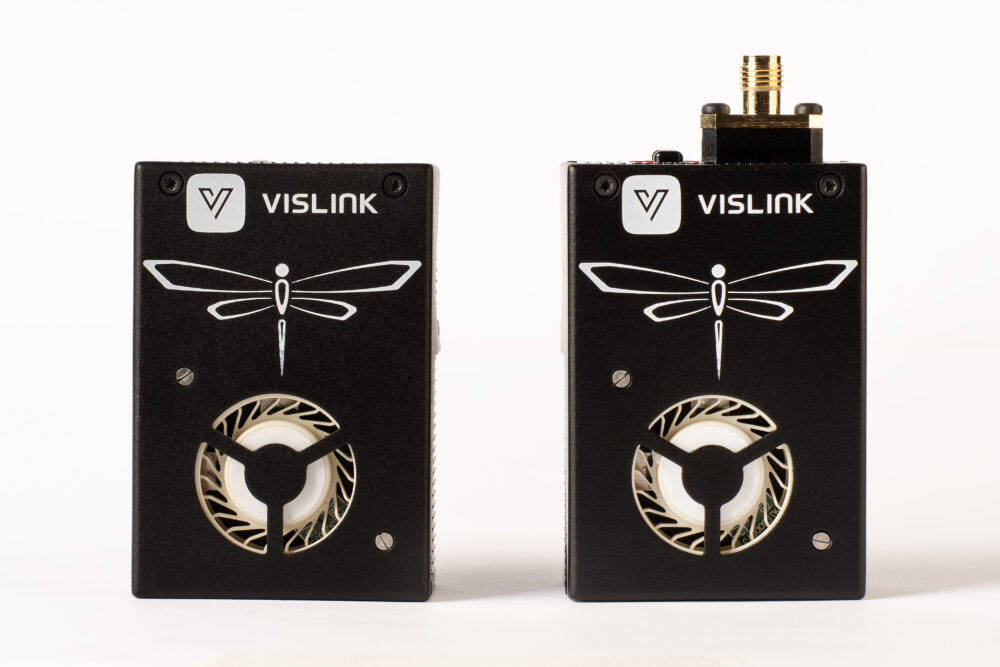When considering lightweight transmitters for drones, bodycams or mini cameras, it is easy to focus on weight as the only metric in making a decision.
Of course, it is always relevant to consider this when looking at technology that needs to be fitted to drones or worn unobtrusively on the body, but there’s a deeper conversation to be had – one that considers not just size and weight, but spectrum, reliability, range, and operational requirements across varying environments.
At Vislink, we believe the real power lies in giving users the right tool for the job, including whether that’s COFDM, 5G, or a hybrid solution, but also whether the device is fit for the mission.
The key is to understand your mission requirements, and then to align them with the right product.
Key Considerations for Mini Transmitters
Before selecting a modulation type, it’s important to assess the physical and technical attributes of the transmitters:
- Robust Design: Your transmitter should be built to endure years of field use, including operation in wet or windy conditions. Devices made with lightweight, non-durable materials may fail prematurely or lose water resistance over time.
- Video Output Quality: Not all miniature transmitters deliver broadcast-quality video. Ensure your device meets the resolution, bitrate, and quality standards your workflow requires.
- Power Efficiency and Heat Management: High-power transmitters may consume more energy and overheat quickly, reducing filming time. Efficient thermal design and power management are essential for extended field use.

Users must consider the power demands of any transmitter when operating with drones
COFDM: Proven, Secure, and Resilient
COFDM remains the gold standard for many tactical, military, and broadcast applications. Why?
- Non-reliance on public infrastructure; COFDM enables a fully private network with no dependency on telco networks or cellular coverage.
- Spectral efficiency in congested environments; It handles multipath interference far better than many alternatives, especially in dense urban or rugged terrain.
- Low latency, long-range transmission; Especially critical for drone, helicopter, or marine-based applications.
- Operational control and security; With encryption and frequency planning, COFDM offers highly secure links in contested or sensitive environments.
5G: High Bandwidth for Connected Environments
At the same time, 5G is a game-changer in environments where coverage is strong and high throughput is essential. Our solutions are designed to harness the full potential of 5G for applications like:
- Live event production with high bandwidth requirements
- Public safety operations in 5G-ready urban environments
- Vehicle-mounted or body-worn kits for law enforcement and first responders
A 5G deployment leverages mostly already existing ubiquitous coverage and cloud computing infrastructure. This provides flexibility for streaming to commercial devices like iPads or mobile phones and enables integration with mobile edge computing for powerful AI-driven content production and real-time analysis on familiar hardware.
But even here, 5G has trade-offs: coverage limitations, reliance on public telco networks, and potential challenges in spectrum availability or congestion. To address these, Vislink delivers carrier-agnostic, multi-SIM, and private 5G-ready platforms that support seamless integration—but not dependence—on cellular infrastructure.

Drones need to operate in the open air often in wind or rain, so their design needs to be able to withstand exposure to the elements for extended periods of time
Dual-Mode Flexibility: Seamless COFDM and 5G Integration
Vislink’s hybrid-ready ecosystem empowers users with operational flexibility. Our receive platforms are engineered to seamlessly capture transmissions from both COFDM and 5G-based sources. Whether you’re deploying drones, helicopters, fixed cameras, or body-worn systems, Vislink receivers can intelligently ingest and process content from either modulation format—without requiring separate infrastructure.
This dual compatibility provides an essential layer of operational resilience. If 5G connectivity is unavailable or compromised, COFDM can be activated as a secure fallback. Conversely, in bandwidth-heavy environments where cellular networks are robust, 5G becomes the primary channel. Our solutions make this modulation handoff intuitive and mission-driven, not hardware-limited.
The Bottom Line: Modulation Should Match the Mission
There’s no one-size-fits-all answer when it comes to wireless video transmission. Real-world use cases demand a hybrid approach – one that considers:
- Environment
- Latency sensitivity
- Mobility and range
- Network availability and trust
- Security and encryption requirements
Vislink’s deep expertise in both COFDM and 5G allows us to design solutions that are fit-for-purpose, not just trend-driven. Whether you’re operating in a 5G-rich smart city or a remote maritime theater, our modular platforms ensure you’re never locked into a single approach. More than that, having a product designed to be used in hazardous environments, that will stand up to the environmental conditions, is key to succesfully completing the mission.

Vislink’s Dragonfly transmitter is available in both RF and 5G versions, and is built in a tough body to withstand environmental pressures.
As technology and operational demands evolve, Vislink remains committed to advancing hybrid-ready systems that provide greater adaptability, smarter switching, and deeper integration between COFDM and 5G transmission. We’re not just solving today’s challenges – we’re building the foundation for what comes next.
More than lighter – smarter. That’s how Vislink supports those on the front lines of live video transmission.
Let’s talk about how to tailor the right solution for your mission.